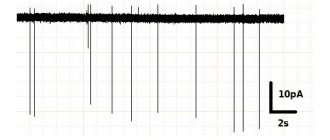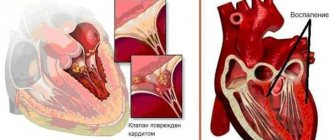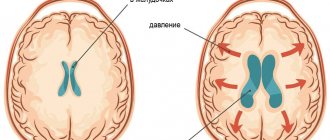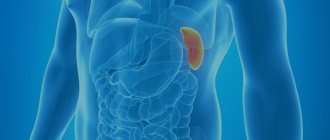Causes of chorea
The most common cause of chorea is a genetic disorder. Pathological changes in genes are passed on from generation to generation. A group of hereditary pathologies includes Huntington's chorea (the old name is St. Vitus' dance). It develops gradually and is characterized by emotional and intellectual outbursts. Nervous chorea is one of the characteristic symptoms of hereditary extrapyramidal diseases - Lesch-Nyhan syndrome, Wilson-Konovalov disease, paroxysmal choreoathetosis.
Congenital pathology is often diagnosed in children with cerebral palsy and is a consequence of a disorder of the nervous system.
Rheumatic chorea (or minor) is a common companion for patients with rheumatism. It is more often observed in children aged 2–6 years and pregnant women.
Risk factors for the development of secondary chorea are:
- cerebral vascular damage;
- chronic cerebrovascular insufficiency;
- infectious diseases;
- inflammation of blood vessels in muscle or connective tissue;
- hormonal disorders;
- long-term use of tranquilizers for neuropsychiatric diseases;
- abuse of anti-nausea medications.
Depending on the agent that damages the basal ganglia of the brain, chorea is divided into vascular, bacterial, metabolic, viral, toxic, traumatic, dysimmune and mixed.
From the history of the disease
Since the classic symptoms of chorea are erratic arm movements and an unsteady gait accompanied by dancing movements, it is not surprising that the Greek word chorea, which means “dance,” eventually became the name for this disease.
One of the first doctors to describe this serious illness was Paracelsus (1493-1541). Describing the phenomena of religious ecstasy in the form of the dance of St. Vitus, popular in the Middle Ages and the Renaissance, he discovered people demonstrating severe pathological symptoms. Much later, already in the 17th century, the doctor T. Sydenham described chorea, which appears in childhood and was named in his honor. And only in 1872, D. Huntington (Huntington) described a hereditary form of chorea that debuts in adults. Now this disease is called chorea or Huntington's disease (abbreviated as HD).
In 1993, an international team of genetic researchers discovered a mutation that causes HD.
Symptoms of chorea
The disease develops gradually, initially there may be no symptoms, but then they appear sharply and vividly. Initially, the patient is concerned about severe weakness, unsteadiness of gait, muscle weakness (decreased muscle tone). Then a specific sign appears - spontaneous motor reflexes. They resemble natural movements of the limbs and face, but occur involuntarily, i.e. a person cannot influence them.
In severe cases, speech is impaired, irreversible consequences occur in the cerebellum, as a result of which coordination is impaired, memory and attention weaken, mental activity deteriorates, delusions and hallucinations appear. A person cannot control his body and thoughts, as a result of which he completely loses social fitness. During sleep, the clinical manifestations of the disease disappear, but it is difficult for the patient to fall asleep due to the symptoms.
Clinical manifestations
The general symptoms of the disease are quite clear. The disease can manifest itself differently in each individual case. The main symptoms of minor chorea disease include hyperkinesis (involuntary movements).
There is the appearance of chaotic muscle contractions that occur randomly and which the child is unable to control.
At the beginning of the disease, hyperkinesis is hardly noticeable. Parents do not perceive grimacing, awkwardness of hands, or unsteady gait as a reason to seek the help of a specialist.
Over time, hyperkinesis becomes more noticeable. They usually occur during excitement. If manifestations of the disorder are ignored, movement disorders become more complicated. They become pronounced, up to a choreic storm - a paroxysmal occurrence of uncontrolled movements in the entire body.
What is especially worth paying attention to?
Handwriting of a child diagnosed with chorea minor
There are a number of symptoms that should be alarming. The initial manifestations of the disease are perceived by many parents as banal antics. But timely detection of pathology is the basis for successful therapy. The main warning signs of minor chorea include:
- Awkward movements while drawing or writing . The child is not able to hold a pencil; if he writes, then only clumsy, disproportionate letters are obtained.
- Uncontrolled frequent grimacing.
- Restlessness . The baby is unable to sit in one place; he constantly scratches himself and twitches different parts of his body.
- Involuntary shouting of different sounds (due to involuntary contraction of the muscles of the larynx).
- Blurry, confusion of speech . In some cases, tongue hyperkinesis provokes the appearance of choreic mutism (complete absence of speech).
In addition, the disease is characterized by:
- decreased muscle tone;
- psycho-emotional disorders (anxiety, moodiness, touchiness, tearfulness).
There are several neurological manifestations that are characteristic only of this disease, which a neurologist will definitely pay attention to during examination:
- Symptom of “flabby shoulders” - when lifting a small patient by the armpits, the head will sink into the shoulders, as if drowning in them.
- Pronator syndrome . If you ask a child to raise his arms and bend them slightly (so that the palms are facing towards the head), in a sick child they will still turn outward.
- “Chameleon tongue” - a child cannot keep his tongue sticking out of his mouth with his eyes closed.
- Gordon's syndrome - when testing the knee joint reflex, the patient's lower leg will freeze in the extension position for three to five seconds, and then slowly return to its place.
In almost all cases, the pathology is characterized by autonomic disorders: cyanosis of the feet and hands, coldness of the extremities, marbled coloration of the skin, irregular pulse, and a tendency to low blood pressure.
Moreover, a third of children who have had the disease may subsequently develop heart defects.
Diagnostics
A neurological examination of the patient and analysis of the clinical picture allows a preliminary diagnosis to be made. Much attention is paid to family history (presence of similar symptoms or confirmed chorea in close relatives), medication use, previous infectious diseases, etc.
For a final conclusion, a comprehensive medical examination is required. General and biochemical blood tests can detect inflammation, determine the level of copper and ceruloplasmin in the blood, and also detect liver particles indicating Wilson-Konovalov disease.
Additionally, CT or MRI and electroencephalography are prescribed.
Differential diagnosis is also carried out with acute rheumatic fever, athetosis, dystonia, myoclonus, athetosis.
Content
- 1. History
- 2 Classification
- 3 Epidemiology
- 4 Etiology and pathogenesis
- 5 Pathological anatomy
- 6 Clinical picture 6.1 Features of choreic hyperkinesis
- 6.2 Muscular hypotonia
- 6.3 Static-coordination violations
- 6.4 Autonomic disorders
- 6.5 Mental disorders
- 7.1 Differential diagnosis
Treatment of chorea
The disease chorea requires an individual approach to treatment depending on the cause that caused it. In case of hormonal disorders, therapy is carried out to correct them. If the disease occurs due to an infection, antibiotics are prescribed. If copper metabolism is impaired, medications are used that reduce the absorption of this substance and an appropriate diet is prescribed. Patients with hypertension should take antihypertensive medications. Corticosteroid therapy is used to treat rheumatic chorea.
Regardless of the etiology of the disease, patients are recommended to take tranquilizers and antipsychotic drugs, for example, tiapride, olanzapine or risperidone. They reduce the severity of involuntary movements and neuropsychiatric symptoms. These drugs can cause serious side effects, so they are used only in adults.
To improve the transmission of nerve impulses from the brain to the muscles, B vitamins are used, for example, Neurobex is a source of vitamins B1 (thiamine), B6 (pyridoxine) and B12 (cyanocobalamin). To improve cerebral circulation, drugs that improve metabolic processes are used, for example, Bilobil, Piracetam, Ginkgo, Actovegin, Memoplant, Tanakan.
Sedatives can be used to help you fall asleep quickly.
The drug developed for the treatment of Huntington's chorea is tetrabenazine, a benzoquinolysine derivative that has a specific effect on the central nervous system. The medication inhibits the metabolism of biogenic amines, which leads to a decrease in the content of monoamines in the brain, including dopamine. Depletion of this hormone causes hypokinesia, which reduces the severity of the disease.
see also
- PANDAS
| Hyperkinesis | |
| |
Complications
Most forms of chorea are characterized by frequent relapses, the frequency of which can be reduced by following your doctor's recommendations.
When it comes to hereditary pathology, the prognosis is generally unfavorable. The disease gradually progresses. Severe complications develop - pneumonia, heart failure. Uncontrolled movements often cause injuries. Choreic hyperkinesis can cause spasm of the respiratory muscles, which can lead to suffocation. Patients often complain of hallucinations and other psychological disorders.
Forms of the disease
Based on the specifics of symptoms, the following forms of chorea are distinguished:
- hyperkinetic. It is characterized by spontaneous motor acts, which, as noted earlier, are not subject to conscious control. Also, speech disturbances due to hypertonicity of the facial muscles are typical for the hyperkinetic form of chorea. Sometimes patients have convulsions and uncontrolled oculomotor acts during sleep;
- akinetic-rigid. Severe muscle hypertonicity;
- mental. Dementia gradually develops, and the patient's personality undergoes destructive changes.
Psychotic phenomena for the latter form are also a characteristic feature.
Frequently asked questions about chorea
How does chorea manifest?
The main manifestations of the disease are involuntary, uncontrollable motor movements.
Is it possible to cure chorea?
Acquired chorea can be cured by eliminating the cause. For hereditary forms, symptomatic therapy is carried out aimed at reducing unpleasant symptoms and improving the quality of life.
How to treat chorea?
First of all, therapy is aimed at eliminating the cause. Antipsychotics and tranquilizers are prescribed as symptomatic treatment. To improve cerebral circulation and metabolic processes, B vitamins and nootropic drugs are used.
Forecast [edit]
Motor problems, including chorea, are resolved in an average of 2-3 months.
Relapse occurs in 16–40% of cases. More likely, with poor compliance with penicillin prophylaxis, of course. Intramuscular penicillin administered every 2 to 3 weeks is superior to the 4-week regimen and oral penicillin. Relapses are sometimes associated with rising ASO titers or other signs of new streptococcal infection, but this is certainly not always the case. There is no obvious clinical parameter that can predict the risk of relapse. It is more likely that if it fails to recur in the first 6 months, pregnancy may recur ( chorea gravidorum
).
Higher recurrence rates are observed at the longest follow-up - may recur up to 10 years after the initial episode - and may therefore be underestimated by series with shorter follow-up.
Usually a relapse is just chorea, even if you had other signs of rheumatic fever. There are only two reports of worsening heart disease after recurrence of chorea. In a study in Thailand, there were also 2 cases where carditis that had improved after initial diagnosis returned again. Some have suggested that perhaps recurrent chorea is a different disease altogether. [22]
10% reported long-term tremor in one study (10-year follow-up). Long-term neuropsychiatric problems are increasingly being recognized (49 studies so far, especially obsessive-compulsive disorder, but also attention deficit hyperactivity disorder, mood disorders, tic disorders, executive function disorders, psychotic features, language disorders). [23]
Cardiac involvement improves in about a third of cases (imperceptibly or not). [PMID 22734303]
Pathological anatomy
Pathological changes in chorea consist of a degenerative-toxic process that affects both mesenchymal-vascular and ectodermal tissues of the brain. Changes in the mesenchymal parts concern the membranes, the latter are thickened, the nature of the tissue is cicatricial, hyaline; in the area of the basal ganglia, thickening and hyalinosis of the vascular walls are especially pronounced.
From ganglion marks, mainly small ganglion cells of the granular layer of the cortex, the molecular layer of the cerebellum, and cells of the subthalamic nuclei are degenerated, while there is no significant glial proliferation. In the neostriatum, the degeneration of small ganglion cells is especially pronounced, although in very acute and severe infections large ganglion cells also suffer.
In 10% of cases with chorea, vascular-inflammatory changes are detected.
Kinds
Several stages of the disease are classified:
- latent (hidden). During the latent stage, minor chorea is completely asymptomatic, which makes its diagnosis difficult;
- subacute. At this stage, minor chorea occurs with less pronounced symptoms. But you can already notice twitching of the facial muscles and twitching of the limbs;
- spicy. In the acute stage, all symptoms are pronounced and require immediate treatment;
- recurrent. In this case, after some time, chorea minor can again affect a person.
Etymology[edit]
It is named after the British physician Thomas Sydenham (1624–1689). [25] [28] An alternative eponym, "Dance of Saint Vitus", refers to Saint Vitus, a Christian saint who was persecuted by the Roman emperors and died a martyr in 303 AD. Saint Vitus is considered the patron saint of dancers, whose eponym is given as a tribute to the manic dancing that historically took place in front of his statue during the Feast of Saint Vitus in Germanic and Latvian cultures. [29]
What's the prognosis?
With timely treatment, the prognosis is positive and the disease ends in recovery. However, relapses cannot be ruled out. Exacerbations of the disease can be caused by repeated tonsillitis or a rheumatic process.
After an illness, asthenia may persist for a fairly long period. The main complications of the pathology include heart disease, aortic insufficiency, and mitral stenosis.
The disease is not fatal and, with proper treatment, does not pose a threat to the patient’s life. Death is possible in the event of a sudden failure in the functioning of the cardiovascular system, incompatible with life.










